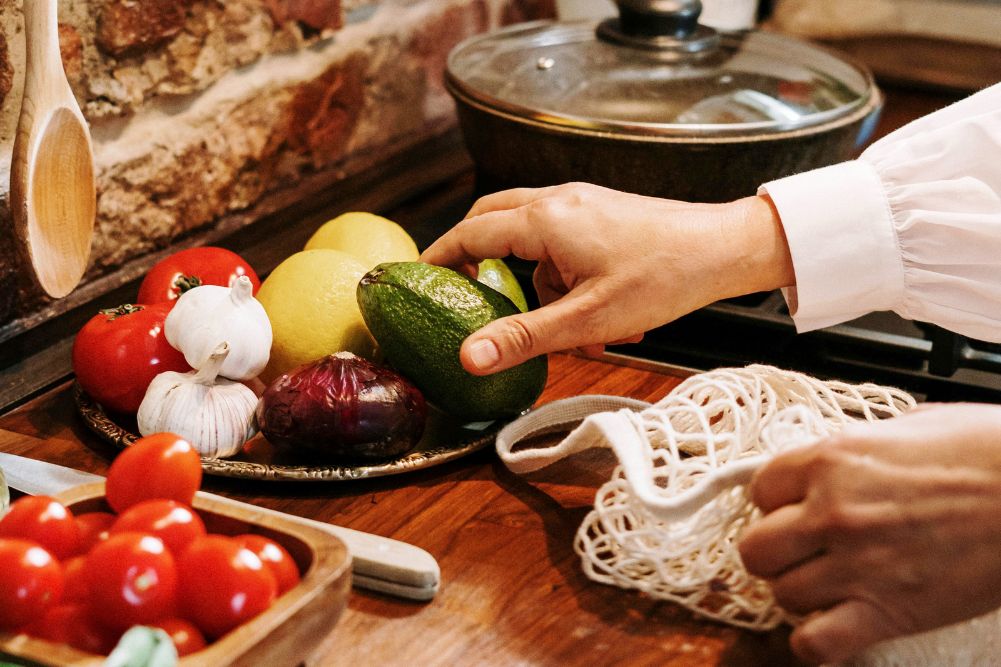5 ways to get kids excited about real food from low-tox expert, Alexx Stuart
When we talk about living a conscious life, we’re often focused on ourselves or our purchases day to day. But in this column I want to discuss family life — more specifically, eating together and food education for the next generation.
It’s amazing just how weird family meals can be: children having meltdowns about dinner, refusing to eat a certain colour, parents making four different meals, white food addicts who won’t eat anything else … Then we’ve got the health challenges of today. If only I had a dollar for every time a grandparent said, “We just didn’t have any of these issues in my day”, meaning eczema, dermatitis, asthma, allergies, intolerances and autism spectrum disorder. It seems these days every family has a child with some sort of health challenge and I refuse to accept this as the new normal when we can all empower ourselves to do so much to shape a different future.
It’s hard to believe in the need to eat your vegies when you never see your parents do it.
There’s a lot of stress these days as parents feel less and less able to provide their children with food education and are confused about how to help them broaden their food tastes. We don’t just have to teach manners these days; we have to teach detective skills, additive meanings, food marketing tactics, distinguishing real from fake, all while the food industry continues to turn the volume up on convenience, with food in squeeze pouches and bars so our children “don’t have to think about it” and parents “don’t have to worry”.
Thing is, though, there is nothing to worry about but, in our minds, we’ve become muddled. Nowhere have we been equipped with the skills to navigate today’s children’s food education landscape.
That’s why this month I want to share with parents and teachers my SCVEE method (pronounced “skivvy”) to get kids excited about and interested in real food. The more we can teach them about the magic of the incredible produce nature provides us, the stranger the fake stuff becomes. It’s easier to illustrate why something wouldn’t be a good option if they’re in the know about what actually is.
S is for SHOP with your kids
And I don’t mean at the supermarket. Keep supermarket shopping as a solo trip if you shop there (take a podcast and a tea and make it an enjoyable after-dinner solo activity!) or order those items online so your kids aren’t exposed to junk at the cash registers, not to mention the endless shelves of cereals and processed foods in the middle and those end-of-aisle promotions. Just getting them out of that environment will be a big win in reducing their exposure to processed weirdness.
Even if you’ve only time for once or twice a month, take them to the market and get them choosing veg and fruits with you — with no expectation that they will eat it. We’re trying to bring the joy back here! “Little Johnny, why don’t you choose four green vegies for the family for this week?” Johnny invariably then says, “I don’t like it” or something to that effect. “You don’t have to eat it; just think about which ones you like the look of best and make a nice choice for Mummy or Daddy.”
Chat to farmers, sample everything possible and comment not on whether something is “healthy” or “good for you” but more on the pretty colour, yummy crunchy texture or about the season and how it grows best then. Don’t set kids up for “evil” and “good” food and a lifetime of shame and guilt that comes with that! What we’re doing here is making our children conscious of the origins of the food on their plates and getting to know the people who work so hard to produce it for us.
C is for COOK with your kids
We seem to let our kids in the kitchen cook with us mainly when it’s cake-making time. If they’re part of everyday cooking and conscious of everything that goes into it, feeling clever about helping Mum or Dad, they’ll be much more inclined to have a go at eating stuff they’ve made the effort to cook. No age is too young. At four months, my son used to stir his purées — assisted by me; he’s no boy genius!
V is for VARY things with your kids
I remember there was pretty much only one way we ate green vegetables growing up: steamed. Plus, of course, with the low-fat era in full swing, butter was out of the question. So I was just not excited about vegies — surprise! Variety is the spice of life and some kids will fall in love with vegies they thought they hated when they’re presented differently. Oven-roasted broccoli with olive oil and salt is a great example. Puréed, buttery honey carrots is another one.
Invest in a good stick blender or Vitamix-type appliance that you’ll have for years and years and make ultra-delicious, super-smooth mashes and purées packed with vegies. Then roast things, mash things, serve as raw sticks or drowned in roast chicken juices, cooked in the same pan as the roast. Varied approaches can often be the kicker for broadening the variety on the love list as kids become conscious of different textures and ways of presenting the same food.
E is for EAT with your kids
Yes, we’re all busy, but dinner isn’t a restaurant with unlimited options. Whenever you can, try to eat together as a family. For some, breakfast ends up being that meal — or weekend meals because it’s easier for everyone to be together. Why? It’s hard to believe in the need to eat your vegies when you never see your parents do it. Don’t talk about whether or not they’re being “good” by eating or eating it all or being “naughty” by not. Whether they’re eating or not shouldn’t be the focus for congratulations or getting in trouble because that can quickly become about control.
E is for show ENTHUSIASM about whole foods with your kids
As an extension to eating with the family or at least one parent a few times a week, you need to show your own enthusiasm for the food rather than whether or not the little peeps are eating it. Be casual when they melt down over food: “That’s a shame. Well, just sit here and chat to us then.” There’s nothing like boredom at the table with no toys to get a child eventually thinking, “Well, I may as well eat, then.”
Meanwhile, you can affirm their choices when they helped you fill the shopping basket: “Thanks so much for choosing the broccoli; this is the best one I’ve ever tasted.” It might sound like overkill but our kids love validation, and making them feel clever for choosing something for you is a brilliantly simple way to give them some positivity without any expectation that they eat it.
Food was never meant to be stressful; nor is every human meant to love everything (hello, green capsicum, my arch nemesis!). Meals are meant to be simple and delicious occasions when we connect with our favourite humans and exchange ideas, stories and love. So if food is a cause of stress at your house and you feel you can work on your kids’ consciousness, give my little SCVEE method a good, consistent go — and may you raise gorgeous, real-food-loving humans for a thriving future.








